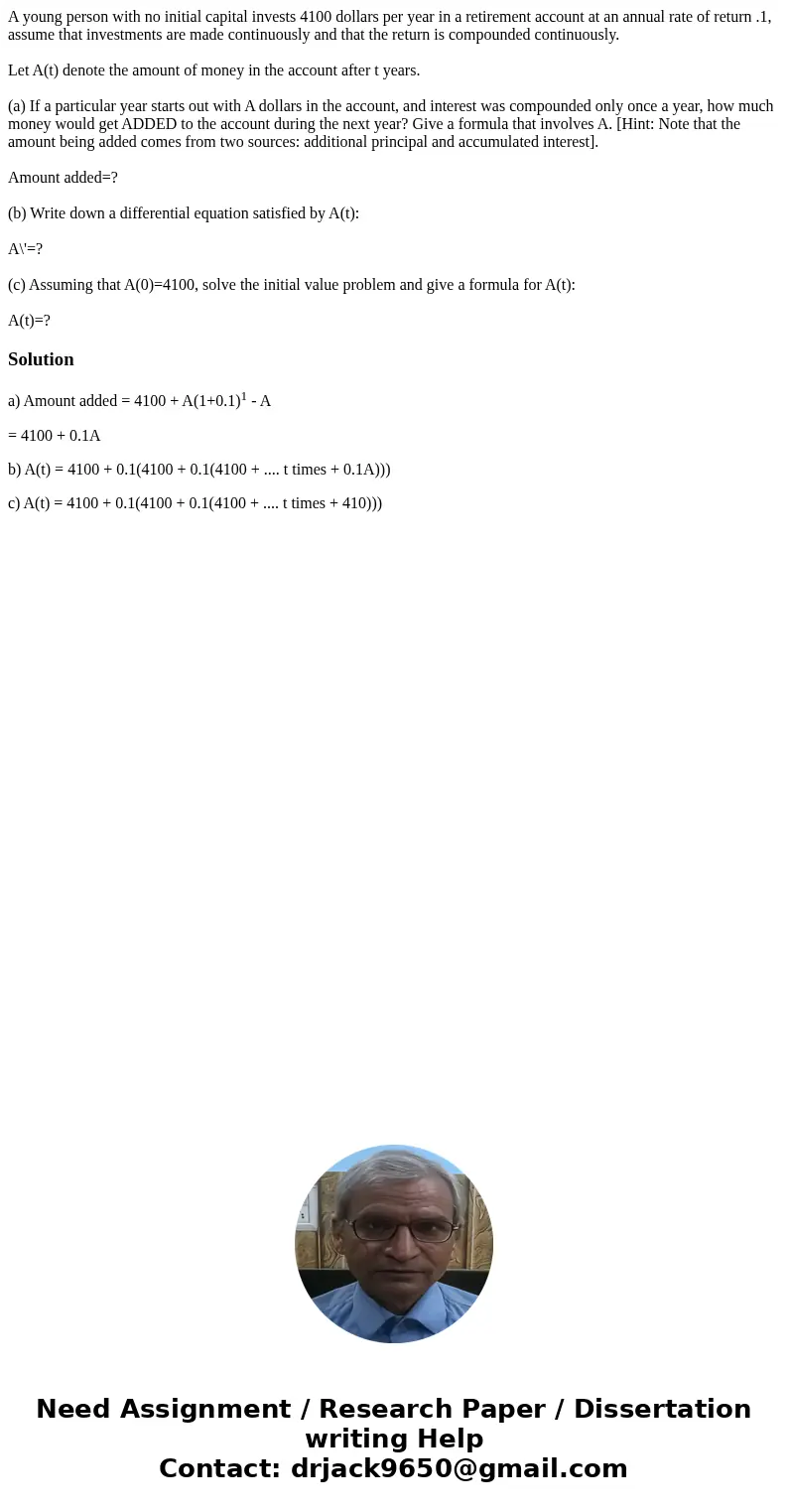A young person with no initial capital invests 4100 dollars
A young person with no initial capital invests 4100 dollars per year in a retirement account at an annual rate of return .1, assume that investments are made continuously and that the return is compounded continuously.
Let A(t) denote the amount of money in the account after t years.
(a) If a particular year starts out with A dollars in the account, and interest was compounded only once a year, how much money would get ADDED to the account during the next year? Give a formula that involves A. [Hint: Note that the amount being added comes from two sources: additional principal and accumulated interest].
Amount added=?
(b) Write down a differential equation satisfied by A(t):
A\'=?
(c) Assuming that A(0)=4100, solve the initial value problem and give a formula for A(t):
A(t)=?
Let A(t) denote the amount of money in the account after t years.
(a) If a particular year starts out with A dollars in the account, and interest was compounded only once a year, how much money would get ADDED to the account during the next year? Give a formula that involves A. [Hint: Note that the amount being added comes from two sources: additional principal and accumulated interest].
Amount added=?
(b) Write down a differential equation satisfied by A(t):
A\'=?
(c) Assuming that A(0)=4100, solve the initial value problem and give a formula for A(t):
A(t)=?
Solution
a) Amount added = 4100 + A(1+0.1)1 - A
= 4100 + 0.1A
b) A(t) = 4100 + 0.1(4100 + 0.1(4100 + .... t times + 0.1A)))
c) A(t) = 4100 + 0.1(4100 + 0.1(4100 + .... t times + 410)))

 Homework Sourse
Homework Sourse